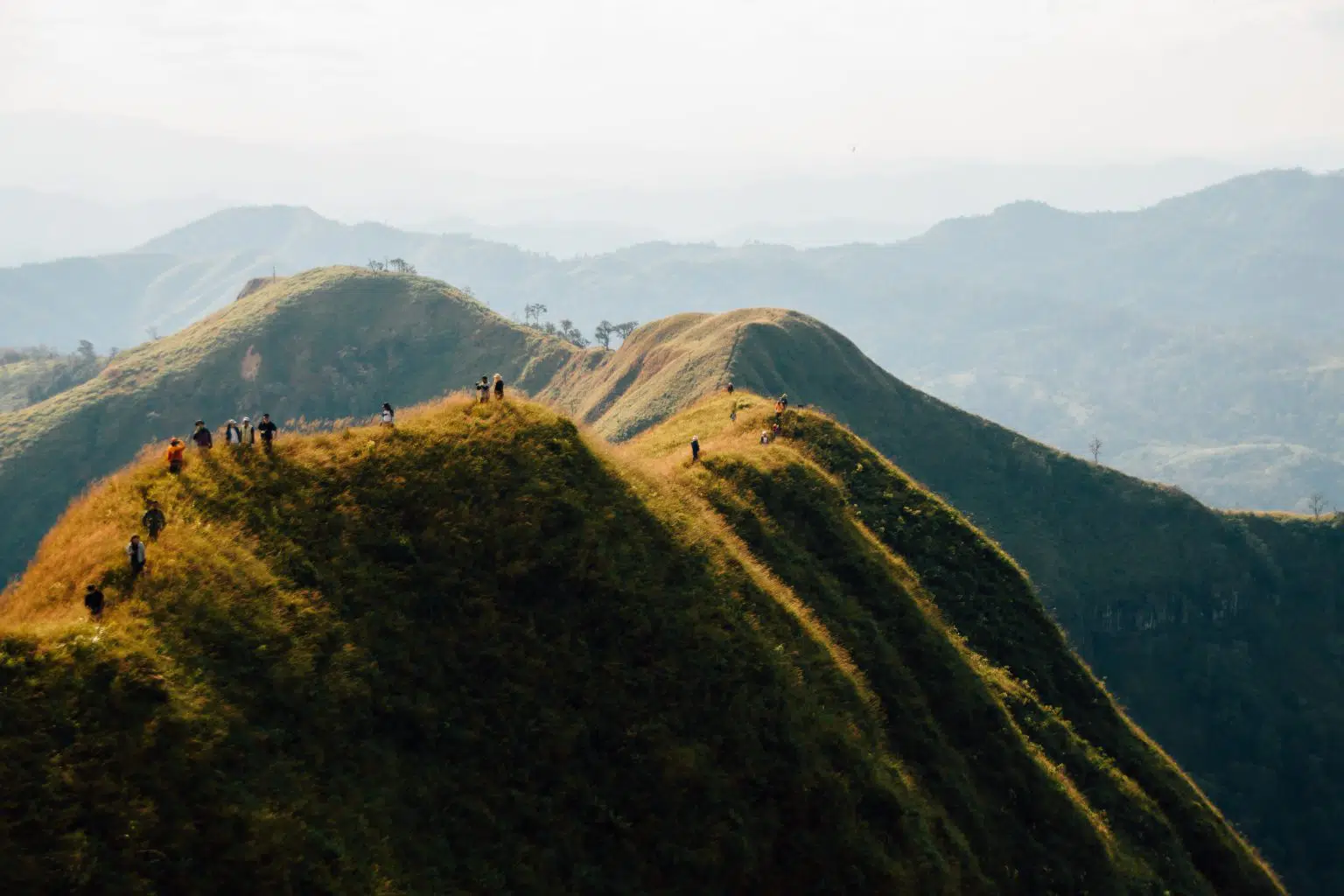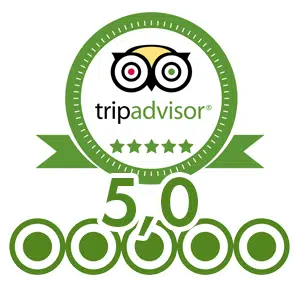We’re all probably guilty of either under or over-packing water on a hike, even if we don’t realise it. It can be tricky to figure out. How much should I be drinking? How much can I carry? Does the weather affect this? Does the type of hiking affect this? Not enough water and you end up feeling dry-mouthed and possibly dizzy, too much water and your pack could become super heavy and the toilet breaks could become endless! Have a read to find the answers to these questions and get some more great tips on staying hydrated.
Regardless of the gear we carry and the passionate arguments about which is the best thingamajig, the one thing that is guaranteed to be in every hiker’s pack is water. Water is essential to our well-being; we literally can’t survive without it. Although the amount of time we can live without water is approximately three days, the answer is going to vary depending on many factors. Believe it or not, it is also possible to die from drinking too much water on a hike – it does happen! As hikers, we should be carrying adequate water on every hike but how much water is enough? And how should we carry it?
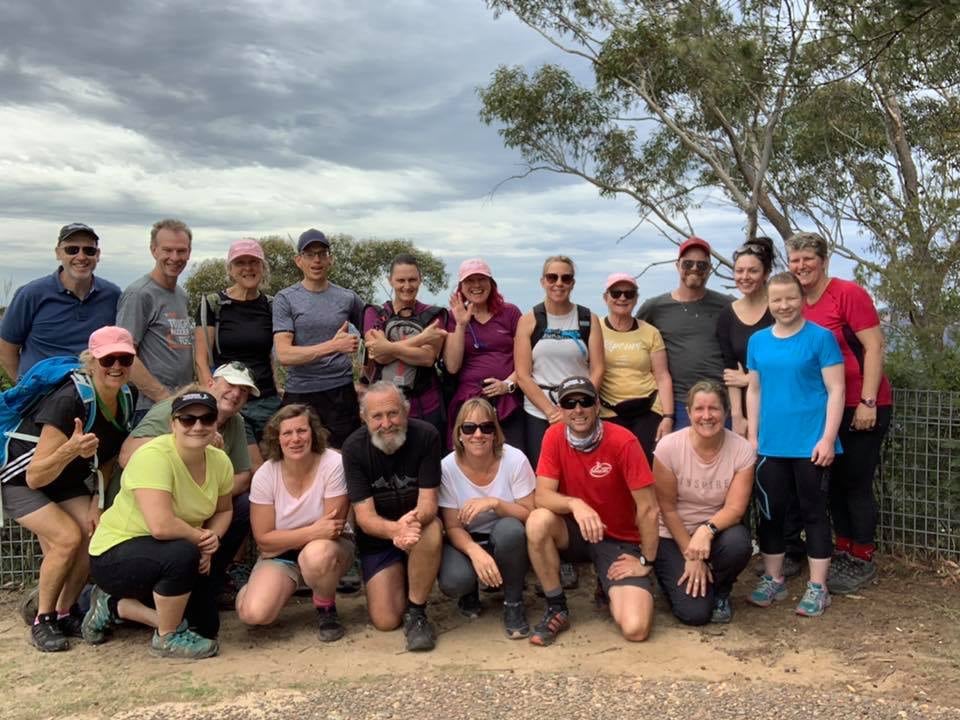
On short hikes (3-4km), I don’t drink very much. On very hot days, I will water-load before the walk and sip from a water bottle or bladder during the hike. What this means is that, when temperatures become extreme, I will drink about 750mL at the start and will carry around 2L just in case. During the cooler months, I may only drink about half a litre at most.
On long hikes, the amount of water needed can vary more because there’s more time for change out on the trail. I typically classify long hikes as being between 6-15 hours, travelling anywhere up to 30-50km in a single day, or doing multi-day hikes. A good example here is a three-day hike I did on the Canberra Centenary Trail during mid-summer, where the temperatures reached 37°C at their hottest. During the biggest day of this hike, I travelled just over 58km, walked for over 13 hours, and drank 7 litres of water. This is an extreme example that most people are unlikely to experience, but this provided me with a good indication of my water use. Based on this hike, I now know that in mid-summer I need about 600mL per hour on average but should allow for 1L/hour.

Temperature: A.k.a. the biggest variable in determining how much water you’ll need to carry. In cooler conditions, the above recommendation will likely be more than adequate. If you’re in heat, you’ll probably need an added 500mL per hour to replenish lost fluids.
Terrain: Differing types of terrain take different tolls on the body. Tricky conditions underfoot, rugged terrain, scrambling sections, and sustained ups and downs can all make for thirsty work. The level of exertion likely on any given trail is usually easy to determine by measuring the overall elevation gain and steepness of the trail, but heavy packs and the altitude of the hike can also increase exertion and have us working up a thirst in a hurry. If you’re carrying a heavy load or tackling a trail above the 2,500m mark, be prepared to carry an extra few hundred mL of water per hour of hiking.
Personal metabolism and absorption rates: In every group of hikers, there is usually someone who has twice as much H2O and someone else who seems to be fine having just a few sips. When calculating how much water to carry, take into account your own needs and adjust the amount of water you carry accordingly.
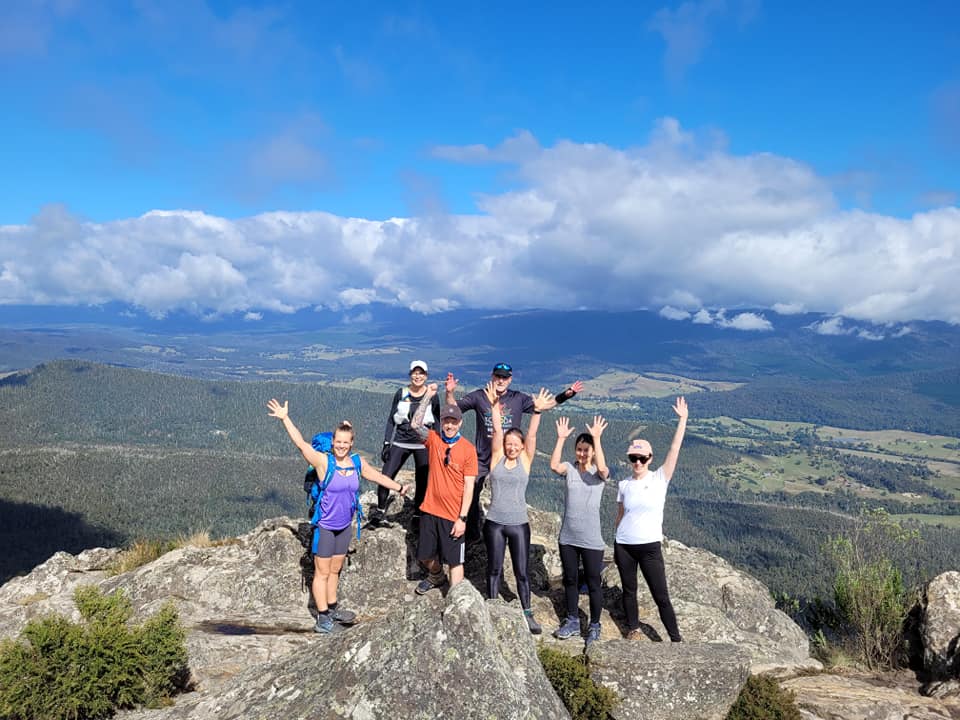
How much water should I carry?
This question is a bit like asking, “How long is a piece of string?” In other words, it’s a difficult question to answer and depends on many factors. However, it is a question you should be able to answer as you gain experience as a hiker. The factors that you need to consider include:
How long is the hike? Is this just a short, half-day hike or a longer, multi-day hike?
How far to the next guaranteed water source?
How hot is it?
How hard are you going to be exerting yourself?
How exposed to the elements are you?
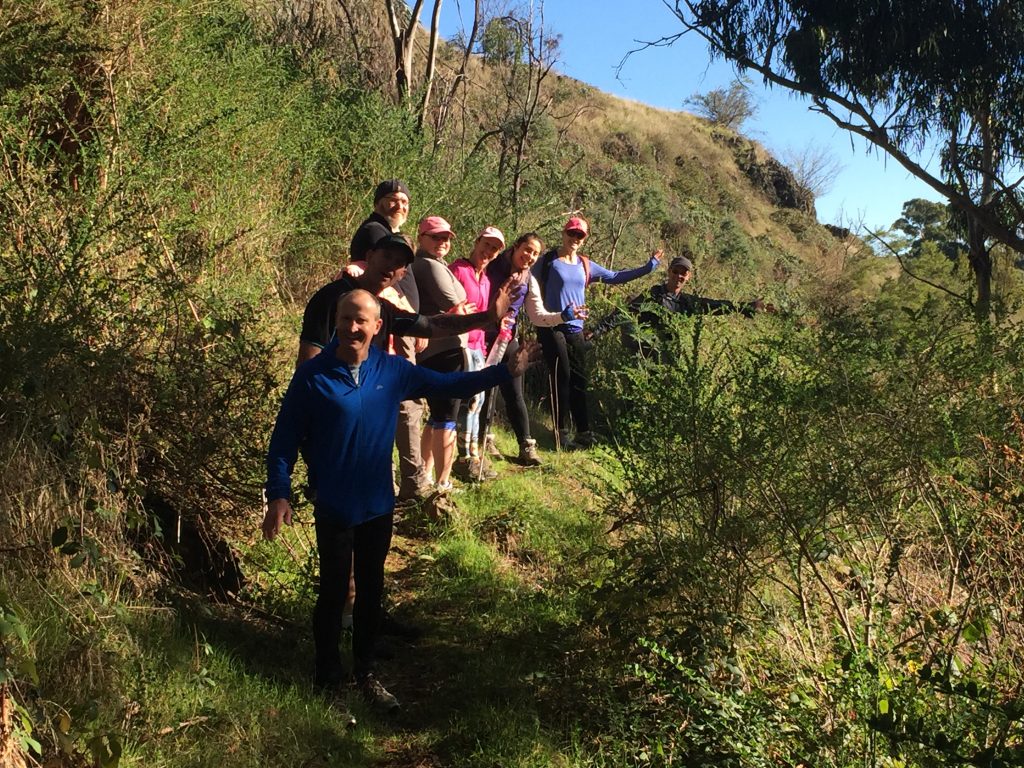
After years of monitoring my water usage, I know that I drink around 1L of water for every 10 kilometres travelled in cooler months. In very hot weather, I will allow 1L/hour. But of course, this will vary from person to person; learn what works for you with a bit of trial and error, and use a bit of common sense based on the environmental conditions.
Your first step should be to determine the overall mileage of your intended route and the time you expect to take to complete it. Some shorter hikes may lack mileage but their difficult terrain can demand far more exertion and take more time than longer hikes on more moderate trails. Now, take this time and aim to carry enough water to allow yourself 250mL of water per half hour on the trail or 1L per two hours of hiking. Remember this is a baseline number, so consider these variables as well.
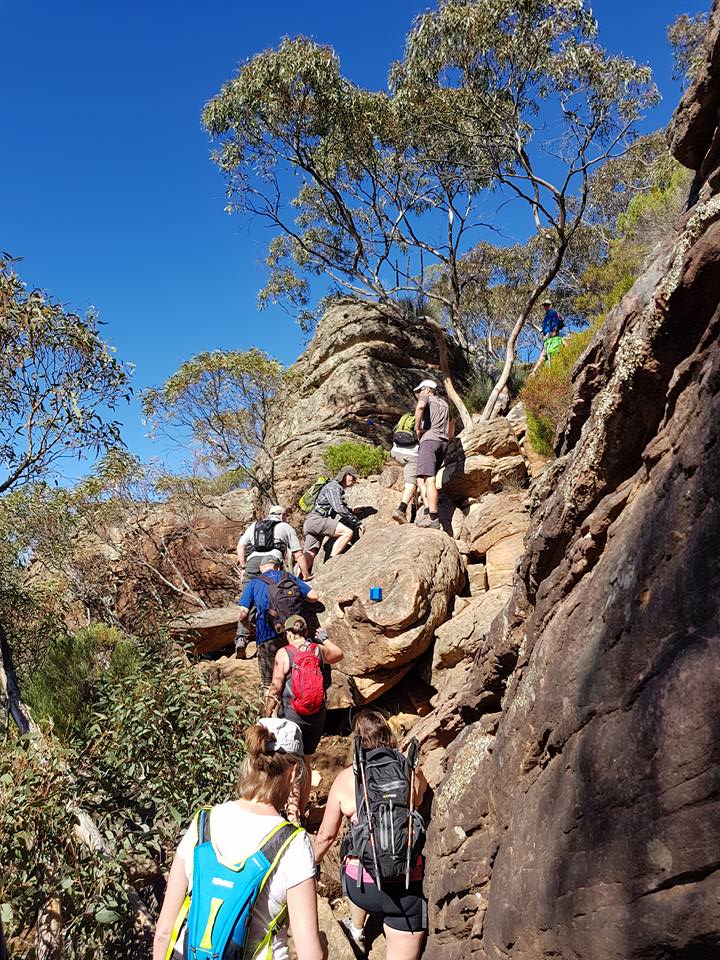
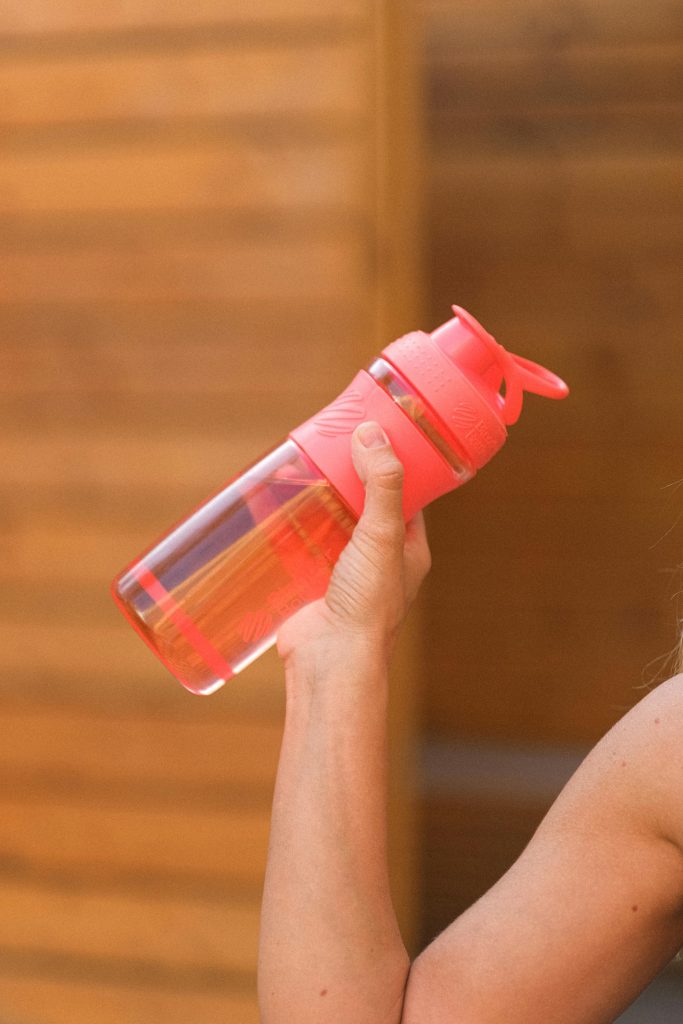
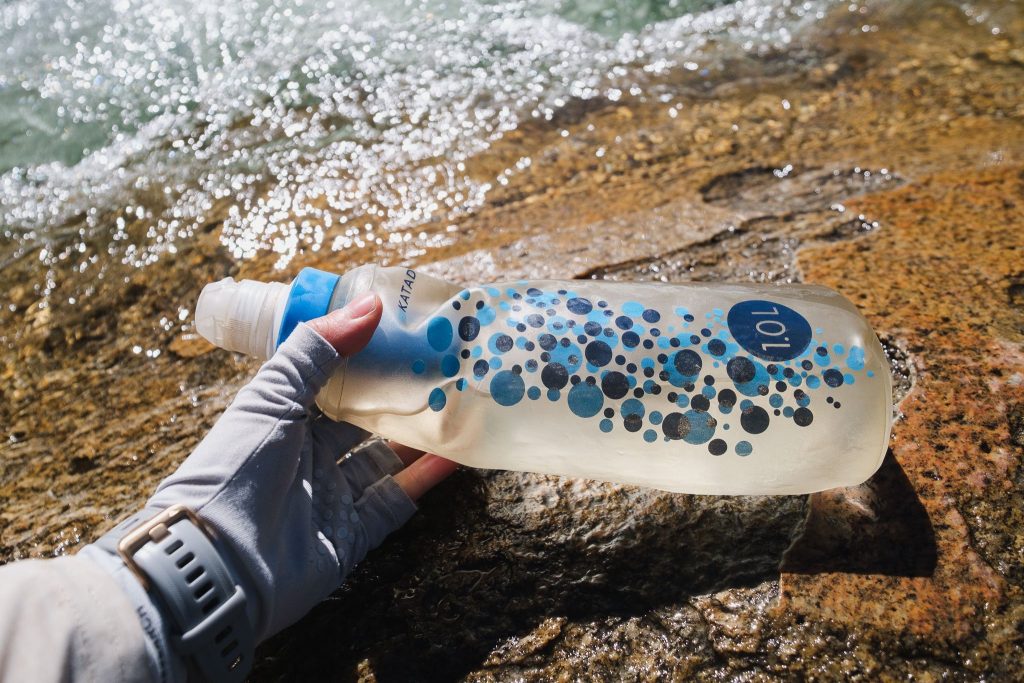
How to store water
Once we’ve determined how much water we need to carry with us on the trail, our next step is to choose how we will carry it. The three main options are hard-sided bottles, hydration bladders, and collapsible bottles. While the option you choose will ultimately come down to personal preferences, each system has a number of pros and cons that may sway your decision.
Rigid water bottles are probably the most common way to carry water. Water bottles can be made of either a plastic compound or, less commonly, metal. They are good because they’re sturdy and robust, and are generally inexpensive and widely available. Clear bottles make it easy to see how much water you’ve had. The width of the mouth changes some pros and cons; wider mouths are easier to fill but harder to drink from. Narrower mouths are harder to fill but easier to drink from. However, these bottles can be heavy and clunky depending on what you choose and are generally limited to about 1L in volume, making them inconvenient for longer hikes.
Collapsible bottles are becoming more popular and have similar pros and cons to rigid water bottles. They just have the added feature of being adjustable to the volume of water, meaning they can take up less space within a pack as the volume of water reduces.
Water bladders are a little more specialised and so are not as easily found at the local shops (and also don’t come with as small of a price tag). They can be bought on their own or some packs come with built-in bladders that can be removed and filled. It’s not as easy to gauge your water consumption with these, but it is certainly not impossible. If you’re looking to get into some longer hiking, these are a great option. They are space and weight-efficient and allow you to carry a much larger amount of water in just one vessel. They are also easy to drink from, with a handy nozzle that pokes out of your pack, meaning you can just sip from it like a straw without having to go through your pack.
No matter what vessel you use to carry water, they are best carried where they are easily accessible. If you’ve got a bottle, keep it on the outside of a backpack rather, not inside it. Backpacks with side pockets are convenient, so you can reach back and grab a bottle to sip from while walking. If you can’t drink and walk at the same time or your pack doesn’t have a side pocket, make sure to stop for a few minutes every hour and sip from your bottle. If you’ve got a water bladder, keep it as flat against your back inside your pack as possible, rather than on the outside of your pack or in a blob at the bottom. This makes it easy to carry and ensures the water drains to the nozzle properly. Keep the nozzle somewhere you can easily grab it and make sure it can reach your mouth.

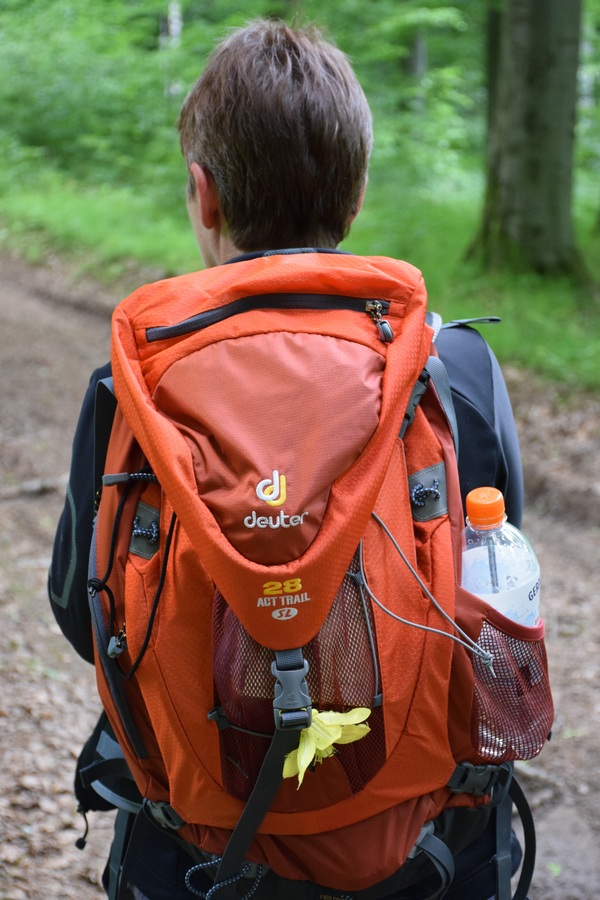
More questions!
Does it have to be water?
No. You can drink any non-alcoholic fluid. Water is usually cheap and easily available, but you can also drink tea or juice if you prefer, or add an electrolyte mix to your water to make it taste better. Remember, it is all personal, so if you find that a drink with caffeine puts some pep in your step, then great! But if it makes you jittery or causes you to crash halfway through your hike, maybe consider another energy source.
Can you drink too much?
It’s possible, but highly (highly) unlikely. Your body is pretty good at flushing extra fluids out by making you pee. Peeing on a hike is normal and you shouldn’t be ashamed to ask your friends to let you take a quick break for this. The colour of your pee is also a good indicator of your hydration level. If your pee is clear and copious, then you’re drinking enough. If it’s bright yellow or even brownish, you need to drink more water.
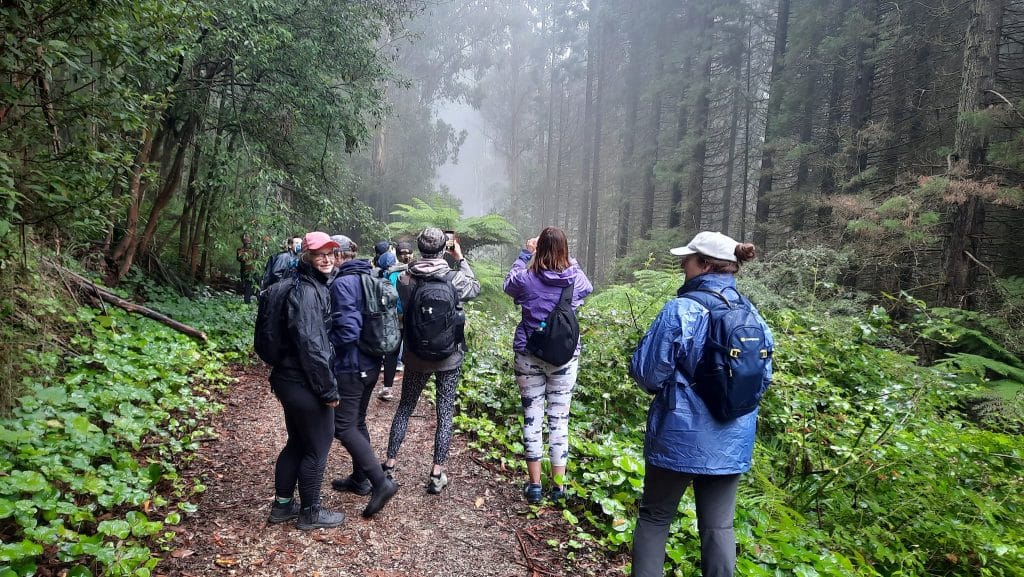

Can you refill water vessels on a hike?
Absolutely. If you want to refill using a natural water source like a stream or lake, it’s best to filter or purify your water using a simple product like the Katadyn BeFree or Sawyer Squeeze that lets you pour your filtered water into your chosen vessel. A Steripen is also an excellent option if you’re carrying wide-mouth water bottles. Being able to refill using natural sources on a hike will let you increase the distance you can hike without increasing the amount of water you have to carry. It will also improve your self-reliance and general outdoor skills. How can you tell where water will be along your route? It’ll be marked on your map.
Phew, that was a lot of info to cover – hope you caught it all! Just to leave you with a final post-hike piece of advice: if you don’t need to wee after a hike, then all the water you drank left your body as perspiration and you still need to drink more water to rehydrate. After a hike, try to drink additional water with electrolytes until you need to use the toilet. Don’t scull it down, just drink half a cup every 5 minutes or so.
So there you have it. From before the hike to during the hike and after the hike, those are the key hydration questions answered for you. If you have any other questions or want to see another topic covered in a blog, send us an email at hello@takeshapeadventures.com.au and we’ll make it happen!

